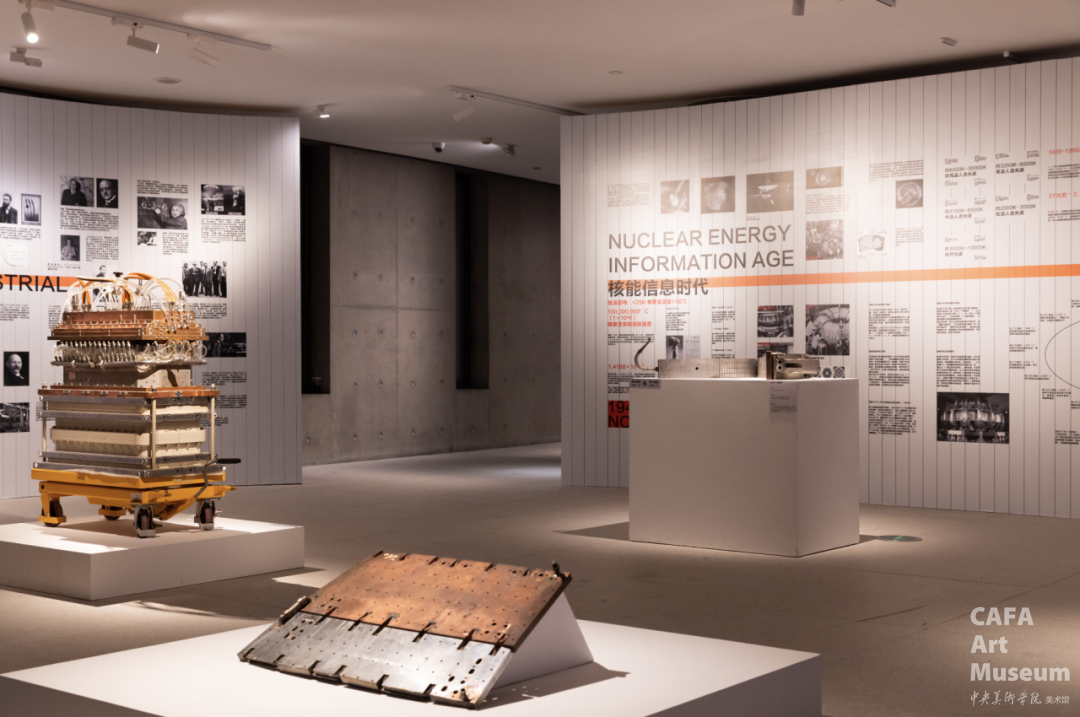


On October 13, 2025, the large-scale science popularization exhibition titled "Energy and Civilization - Science & Art · Fusion Future", which lasted for nearly a month, successfully concluded at the Art Museum of the Central Academy of Fine Arts. As China's first museum-level science and art exhibition themed on "controllable nuclear fusion", it was co-sponsored by the Central Academy of Fine Arts, the Energy Research Institute of Hefei Comprehensive National Science Center, and the People's Government of Hefei Municipality, and jointly undertaken by Big Sun (Hefei) Culture and Technology Co., Ltd. and the Science and Art Joint Laboratory of the Energy Research Institute of Hefei Comprehensive National Science Center. Since its opening on September 14, the exhibition has attracted widespread attention from the fields of science, art and education, and become a brilliant highlight among the series of events of the 2025 National Science Popularization Month, Beijing International Design Week and China (Hefei) International Science and Art Week.
With "energy iteration and civilization evolution" as its context, the exhibition focuses on controllable nuclear fusion, a cutting-edge technology. Through the in-depth integration of historical documents, scientific devices and contemporary art creations, it builds a bridge connecting rational science and perceptual aesthetics. In the immersive experience, visitors can not only review the magnificent course of human civilization driven by energy in front of the document wall, but also intuitively feel the infinite potential of nuclear fusion energy through interactive devices. A number of large-scale science and art installations transform abstract concepts such as plasma and magnetic confinement into perceivable light, shadow and dynamic forms, realizing the two-way inspiration between science and art.


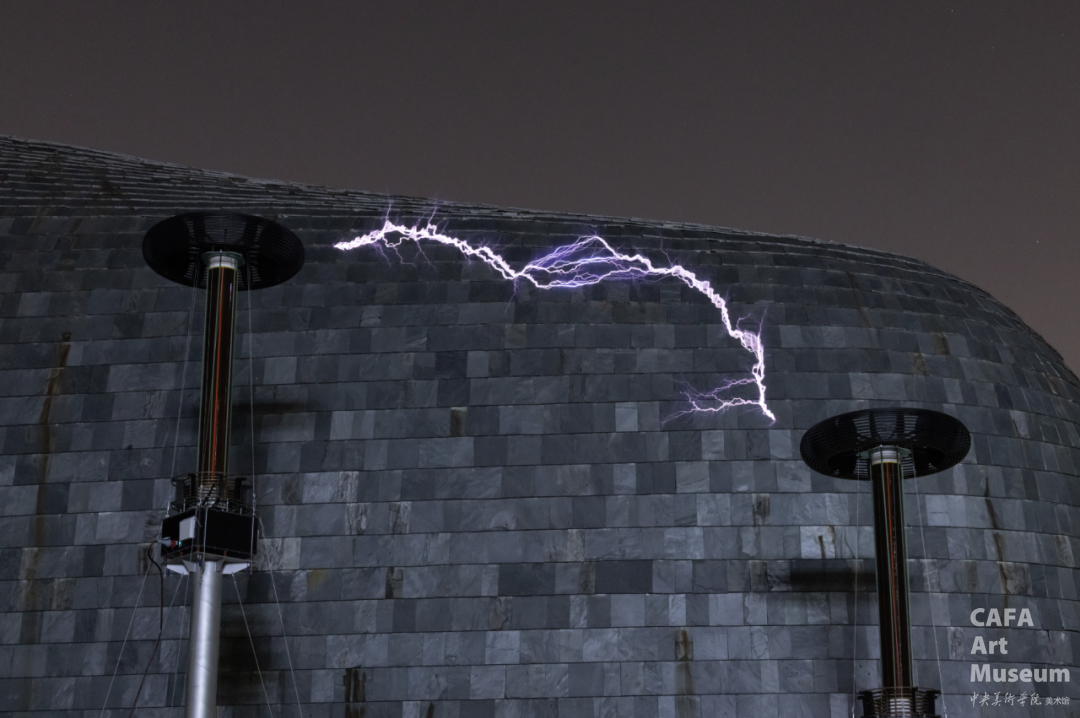
Installation Work Lightning
Tesla Coil, Provided by Steel
Sun (Hefei) Culture and Technology Co., Ltd.
The exhibition site presented a number of large-scale scientific installation works, such as Lightning, Artificial Sun and Wave-Making. These works effectively broke down the disciplinary barriers between science and art, transformed the abstract principles of nuclear fusion into intuitive sensory experiences, and further guided the audience to think deeply about the intrinsic connection between human beings and energy.


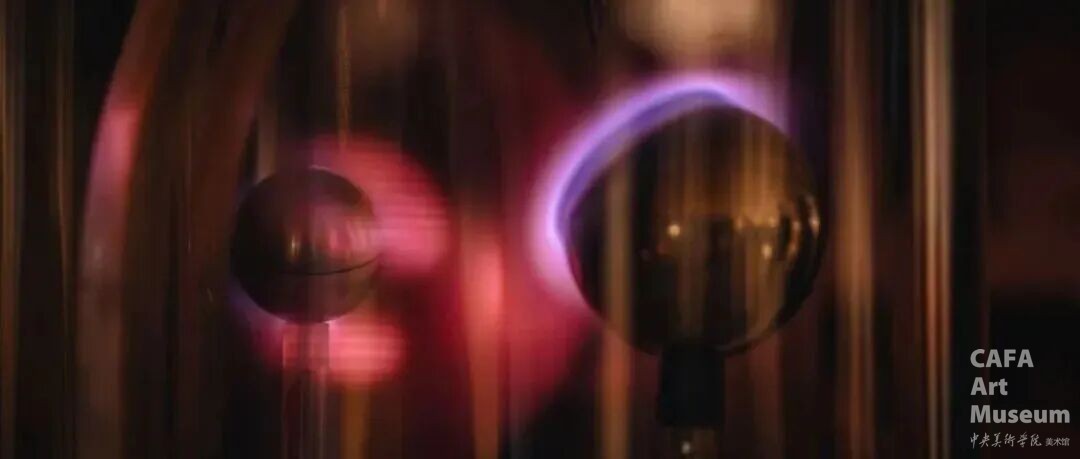
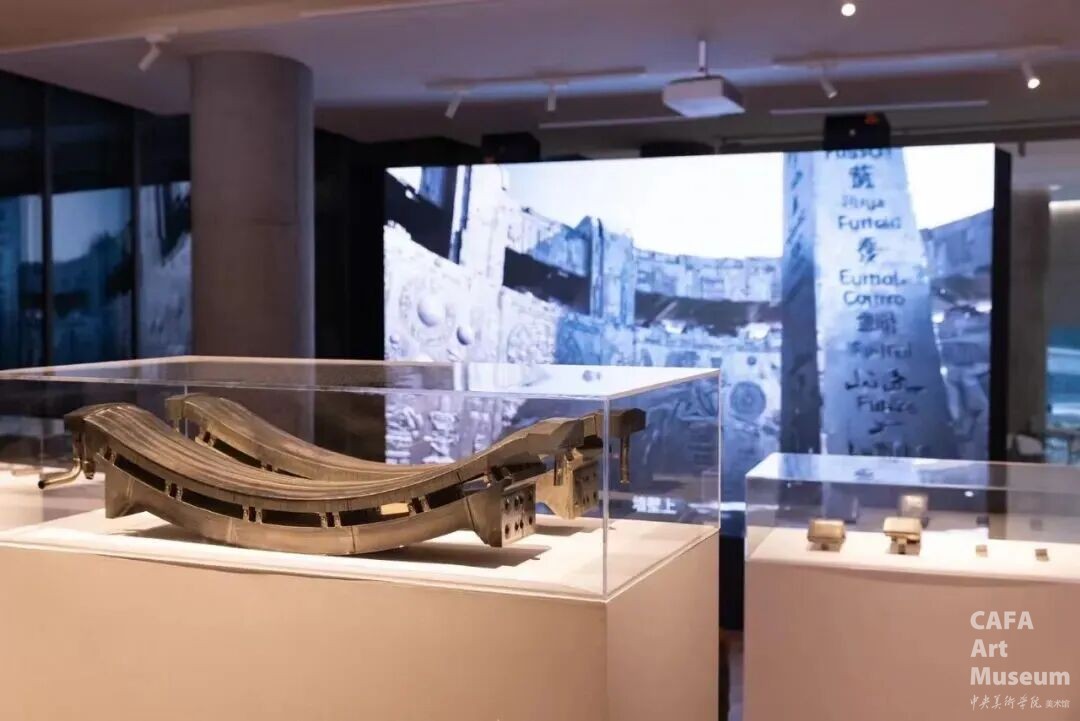
"Scientific Device for Controlled Nuclear Fusion"
Providers: Neutron Technology Application Research Center, Energy Research Institute of Hefei
Comprehensive National Science Center Institute of Plasma Physics, Chinese Academy of Sciences
(Hefei Institutes of Physical Science) Neutral Beam Injection Research Laboratory (Laboratory 13)
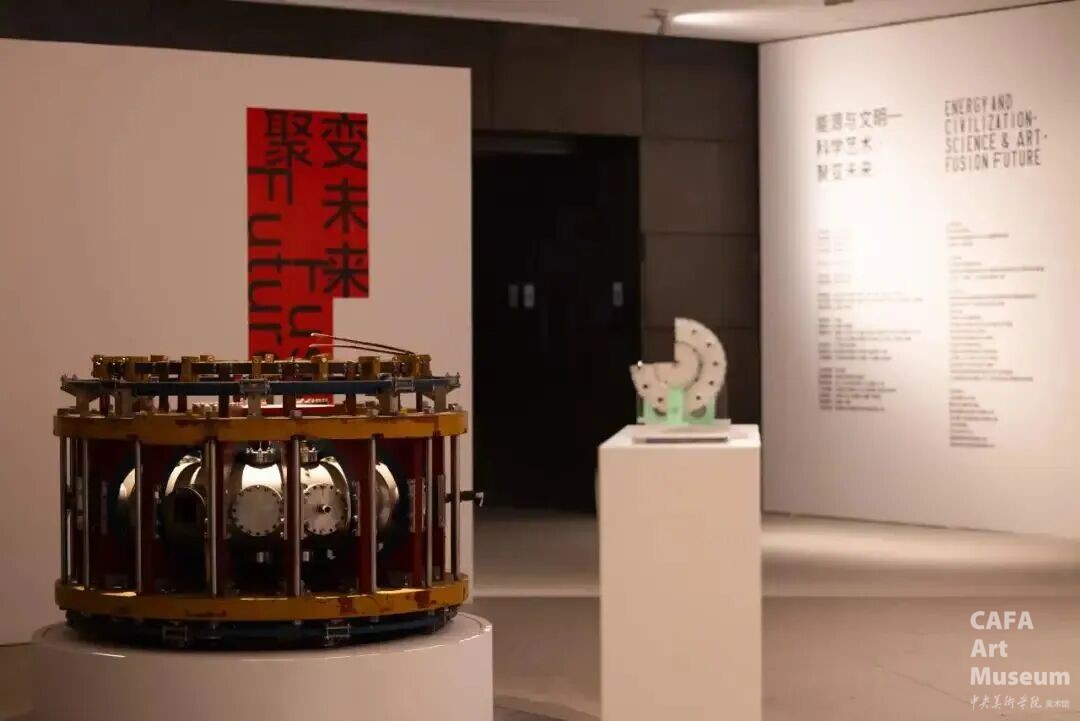
"Scientific Device for Tokamak"
Provider: School of Nuclear Science and Technology, University of Science and Technology of China
The exhibition also featured a special display of several cultural relics related to nuclear fusion science, showcasing the precision and mysteries of the physical world. These items include China's Tokamak device KT-5 and the Experimental Advanced Superconducting Tokamak (EAST); both the physical objects and models document key historical milestones in China's nuclear fusion research. Since the 1960s, China has launched research on magnetic confinement fusion, with Tokamak becoming the main research path.

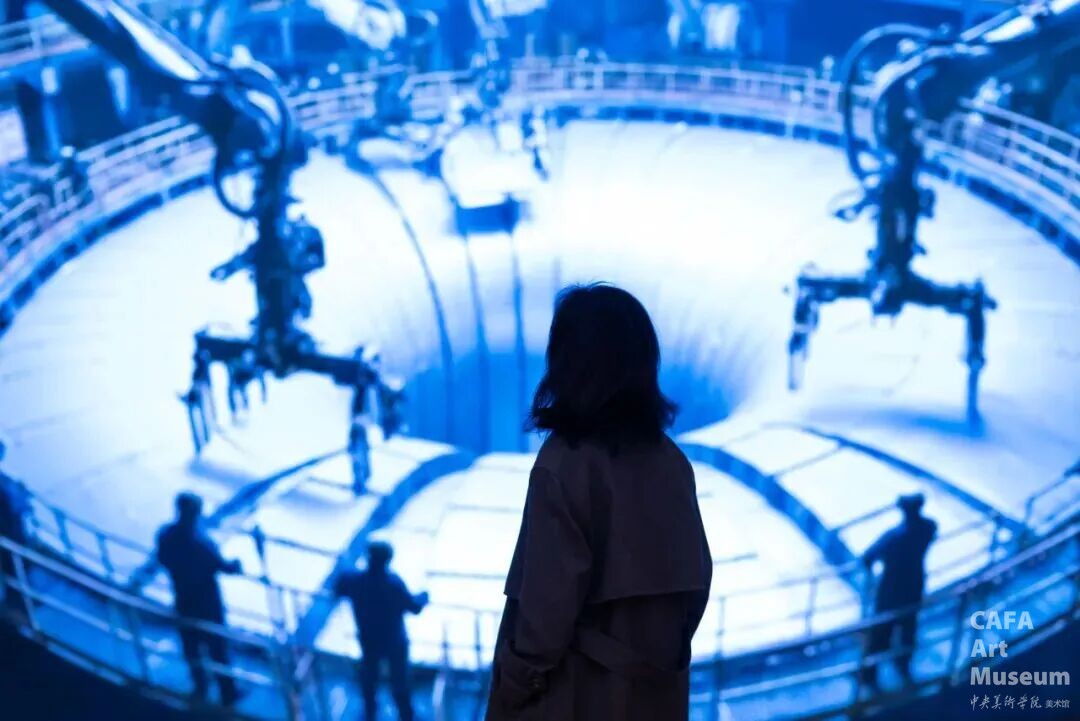
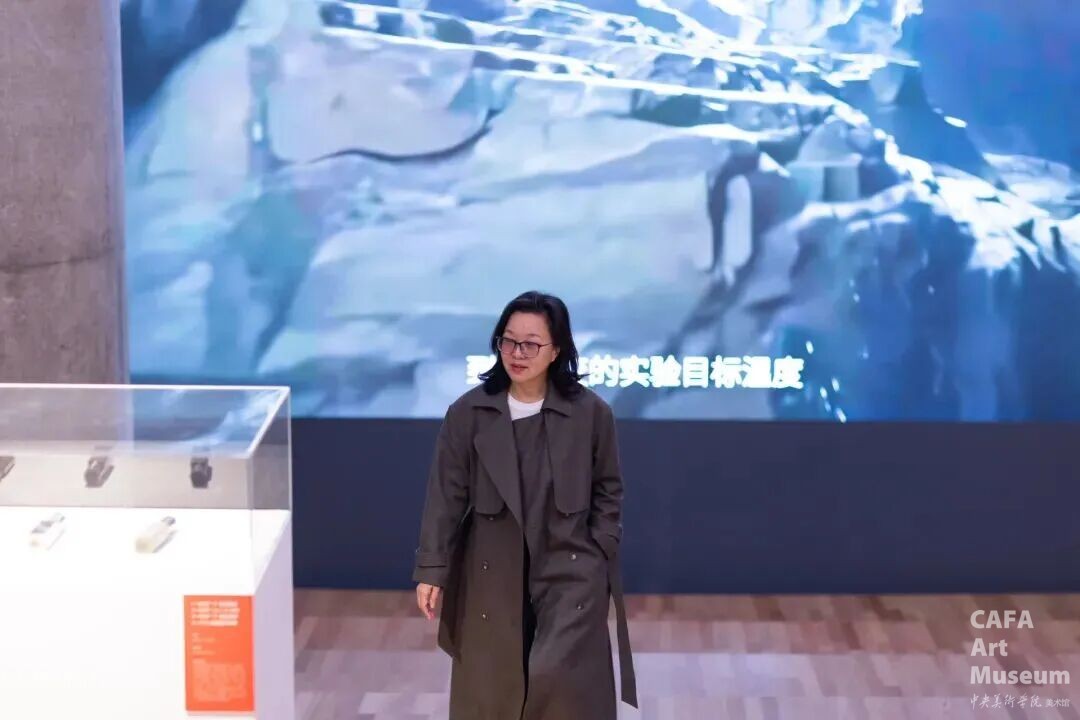
Video Work The Song of the Distant Sun
AGI Video: 19 minutes and 8 seconds, 50 frames per second, 4K high-definition video (3840x2160),
16:9 aspect ratio, color, stereo sound, LED screen installation
Provided by Tianyu ARTECH x Energy Research Institute Science & Art Joint Laboratory
The exhibition also presented an AI-generated video work The Song of the Distant Sun. The film interprets the historical records of solar cultural symbols and the technical vision of controlled nuclear fusion's "artificial sun", showing different "sun-creating" practices spanning time and space. Both the vision of an energy utopia and technical reflections exist in this algorithm-shaped video. When unlimited energy becomes a reality and the human world returns to a human-centered ideal state, what kind of brand-new solar chronicle will we write with controlled nuclear fusion?

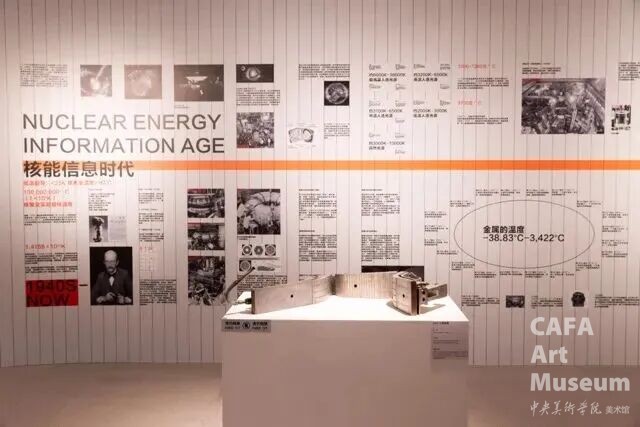

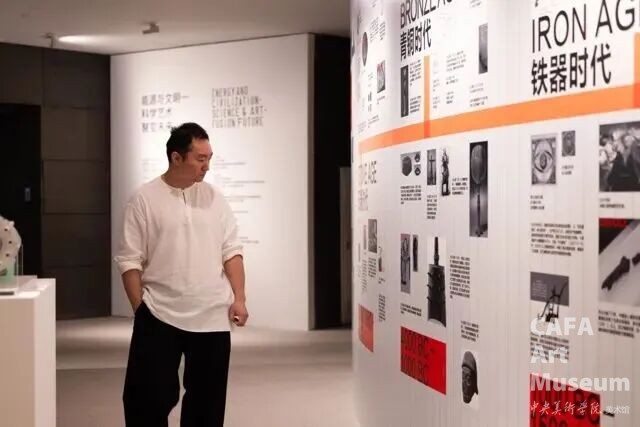
Literature Wall "Energy and Civilization"
The Literature Wall in the exhibition is divided into distinct historical periods—including the Bronze Age, the Iron Age, the Industrial Age, and the Nuclear Energy Age—based on the evolution of energy use types. Along this timeline, it demonstrates the progression of humanity’s approaches to energy utilization. Embedded throughout is a core thread: the continuous enhancement of temperature control capabilities. From merely harnessing the ordinary temperature of fire in the Stone Age to achieving an electron temperature of 160 million degrees Celsius in the Nuclear Energy Age, this progression reflects the remarkable improvement in humanity’s ability to master energy as the times advance.
![]()
During the exhibition, the organizers held a series of high-quality linked events that successfully sparked public discussions on "the future of energy" and "controlled nuclear fusion". This was not only a feast for the eyes and the mind, but also an energy enlightenment journey oriented toward the future.


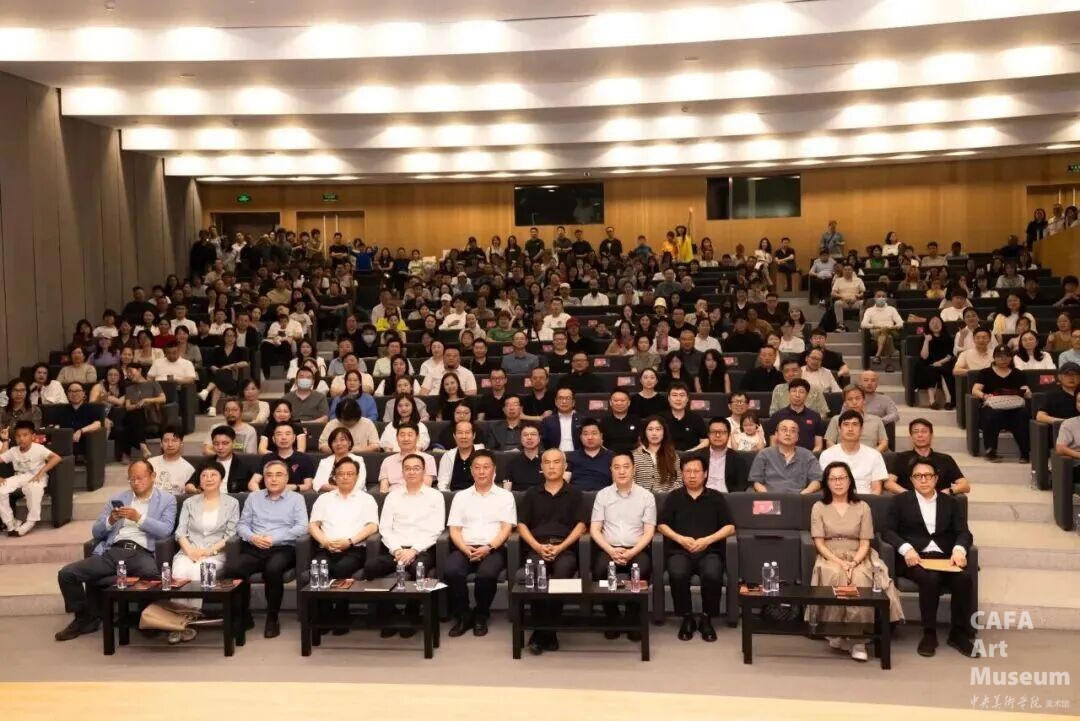
Photos of the Opening Ceremony Site
On the morning of September 14th, the large-scale popular science exhibition "Energy and Civilization - Science & Art · Fusion Future" grandly opened at the CAFA Art Museum. The opening ceremony was attended by a distinguished gathering: leaders of the organizer and co-organizer, experts and scholars from the scientific and art circles, as well as invited guests from all walks of life gathered together to witness the launch of this interdisciplinary grand event. At the scene, children lit up the stage with a futuristic performance. Their pure perspective and the theme of nuclear fusion (which symbolizes humanity’s ultimate energy source) complemented each other, injecting vigorous vitality and hope into this interdisciplinary celebration.
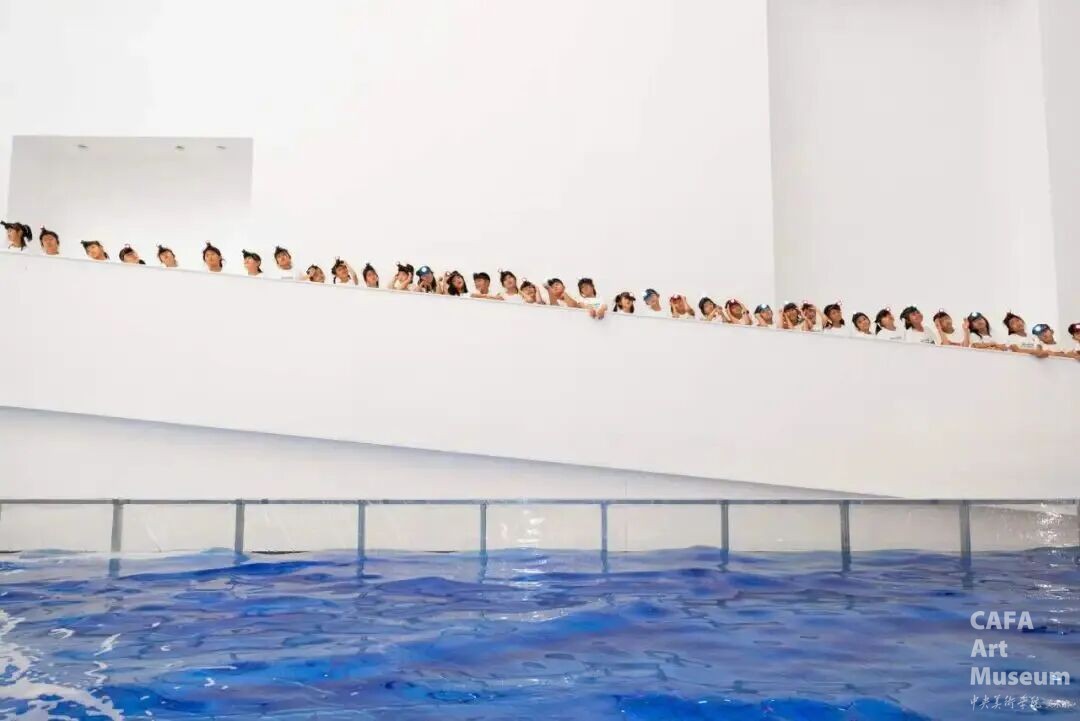
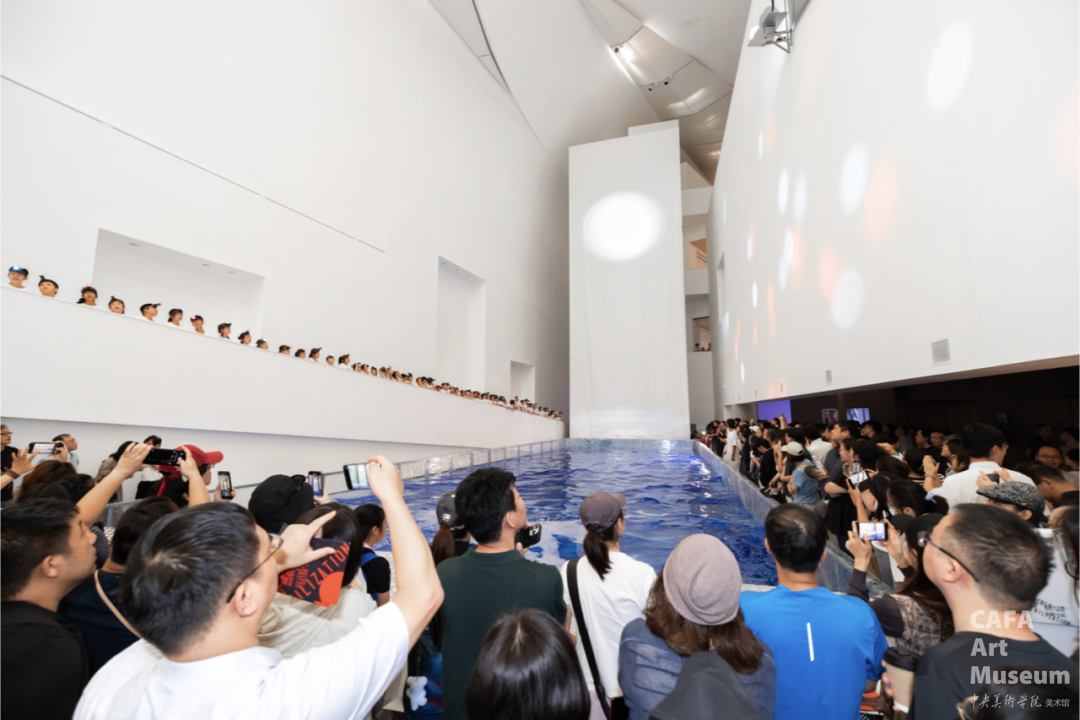
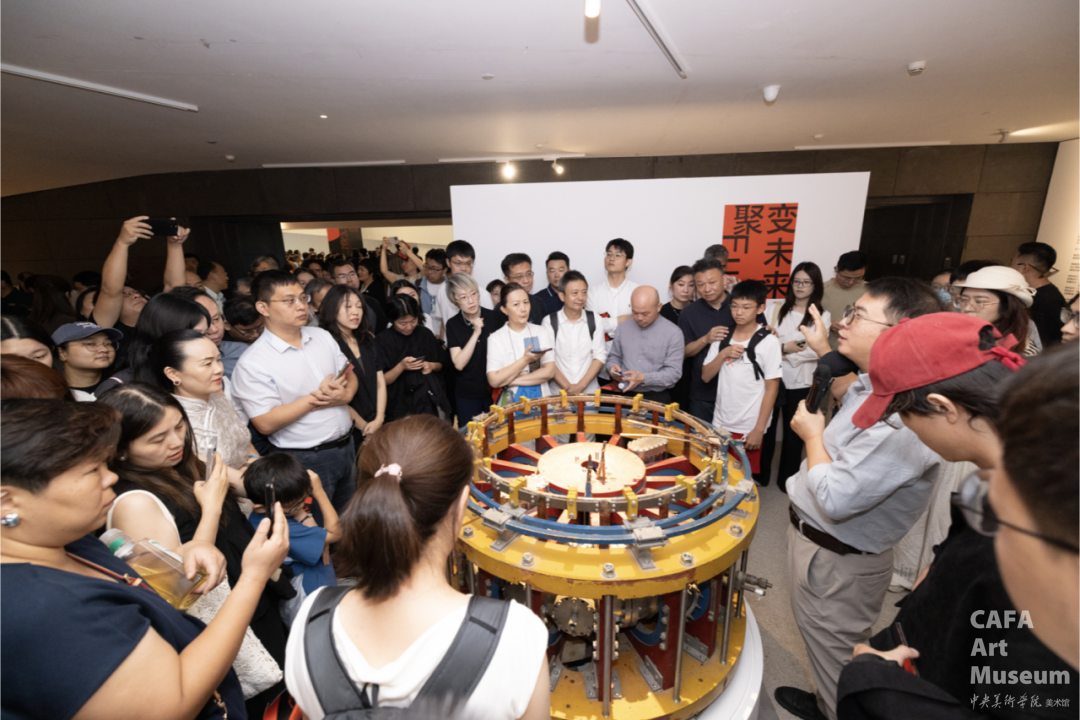
Photos of the Opening Ceremony Performance Site

On the afternoon of the opening ceremony, a themed forum with the same name was held in the lecture hall of the CAFA art museum. Following the thread of the evolutionary relationship between human civilization and energy technology, the forum focused on "controlled nuclear fusion"—an ultimate energy source crucial to the future. Experts and scholars from multiple fields including energy, art, popular science, and science fiction were invited to conduct three roundtable discussions around the core topic of "Energy and Civilization". The roundtables were as follows: Roundtable 1: Energy · Electricity · Science Fiction – The Dominance of Narrative in Future Civilization; Roundtable 2: Science · Public Education · Communication – The New Wave of Popular Science Education in China; Roundtable 3: Science · Art · Resonance – When Humanity Possesses the Ability to Create Stars.

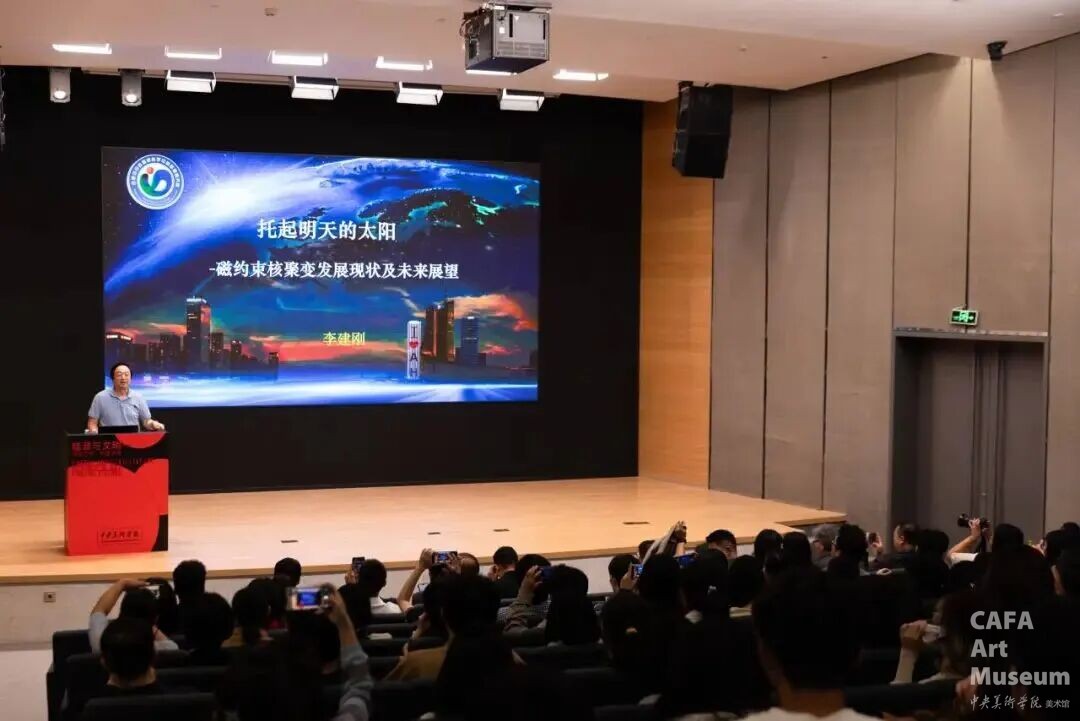
On the morning of September 18th, the lecture series of the "Energy and Civilization - Science & Art · Fusion Future" exhibition grandly invited Academician Li Jiangang to deliver a popular science lecture. Academician Li holds multiple positions, including Member of the Chinese Academy of Engineering, Chief Scientist of the Energy Research Institute, and Researcher at the Institute of Plasma Physics. The lecture, titled Holding Up the Sun of Tomorrow: Current Status and Future Prospects of Magnetic Confinement Fusion, was a themed popular science sharing session. Xu Yang, Secretary of the Party Committee of the Central Academy of Fine Arts, and Lin Mao, President of the Central Academy of Fine Arts, attended the exhibition event.
Starting from the historical evolution of humanity’s energy utilization, Academician Li Jiangang systematically expounded on the important significance and technical paths of developing fusion energy. Combining his own scientific research experience, he vividly introduced the development process of China’s independently designed and constructed fully superconducting tokamak nuclear fusion experimental device (EAST), elaborated in detail on China’s "three-step" development strategy for nuclear fusion energy research, and made a professional outlook on the application prospects of fusion energy in multiple fields beyond power generation. This event not only built a high-quality interdisciplinary exchange platform for scientific researchers, art practitioners, university teachers and students, and the public, but also effectively enhanced the public’s understanding of energy technology and civilization development through a new perspective of science and art, winning unanimous praise from the participants.

Site of Academician Li Jiangang's Popular Science Lecture

On September 20, 2025, the salon series of "Energy and Civilization - Science & Art · Fusion Future" was held at the Central Academy of Fine Arts. With the theme "How Does the Scientific Community Shape the Narrative of the Future?", this session was hosted by curator Shen Cong.
The event invited Hu Yilin (Ph.D. in Philosophy from Peking University, former Associate Professor of the Department of History of Science at Tsinghua University), Bao Yuhan (Lecturer at the School of International Organizations of Beijing Foreign Studies University), and Gao Rencheng (Industry Representative, Co-founder and CEO of Gene Creation) to engage in a dialogue. They jointly explored how the scientific community, through interactions with fields such as policy, capital, and art, constructs society’s collective imagination of the technological future and promotes public participation in envisioning the future.

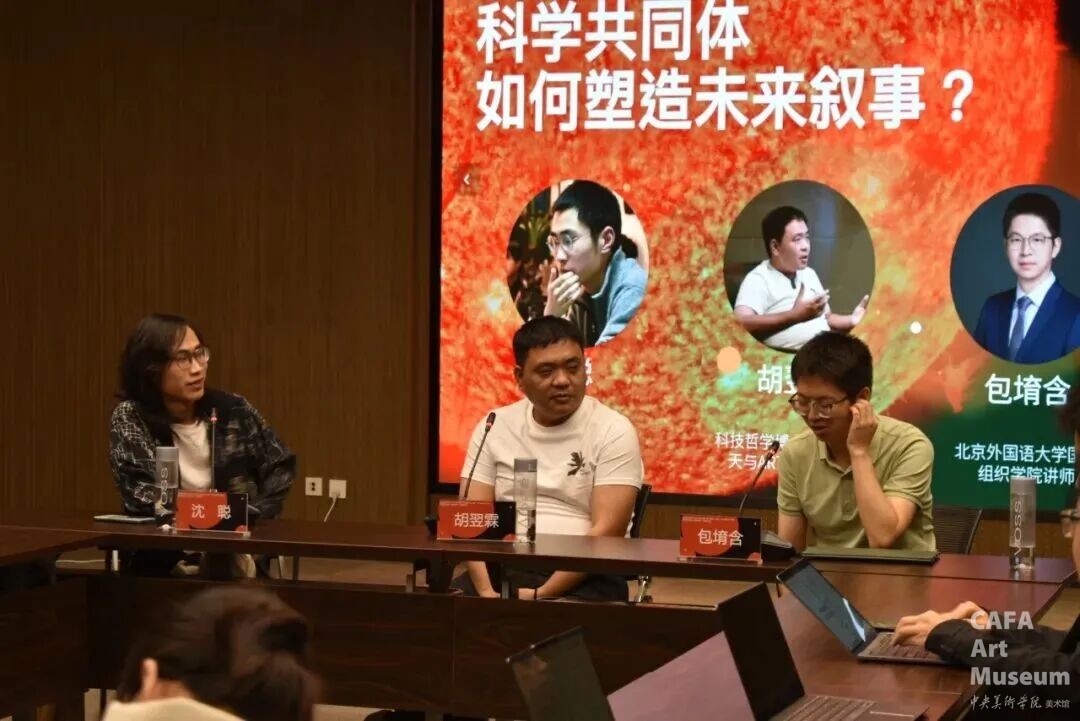
Site of the Salon Series Event "How Does the Scientific Community Shape the Narrative of the Future?"

On the afternoon of October 7th, a unique "Scientists VS Artists Salon" will be held in the museum. Top scientists in the fields of controlled nuclear fusion and artificial intelligence will engage in interdisciplinary dialogues with curators and artists, presenting a brainstorming session on future energy to the public.
With the theme "A Brainstorm Between Scientists and Artists", this salon aims to break down disciplinary barriers and build a public platform for in-depth communication. The event specially invites Dr. Dong Shan recommended speaker for national touring popular science lectures, Dr. Kong Defeng Director/Chief Scientist of the Fusion Industry Center, and Dr. Wang Lishi Assistant Researcher at the Energy Research Institute to discuss together with exhibition curators—including Zhang Zhaohong, the teacher and Chief Curator of the Sculpture Department of the Central Academy of Fine Arts —and curator/scholar Su Lei. Guided by the host and curator Geng Jinghua, the two sides will focus on cutting-edge topics such as energy, nuclear fusion, artificial intelligence, and artistic intervention. From the dual perspectives of rational logic and emotional creation, they will explore how science and technology shape civilization, and how art injects humanistic imagination into science.

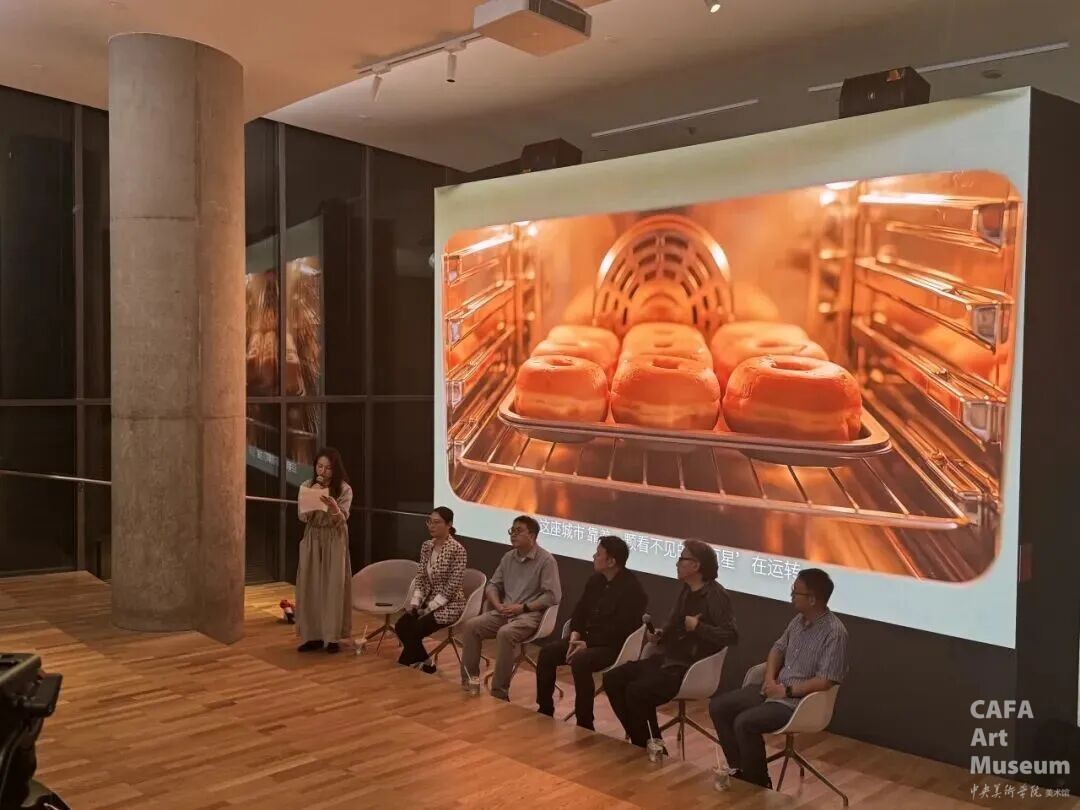
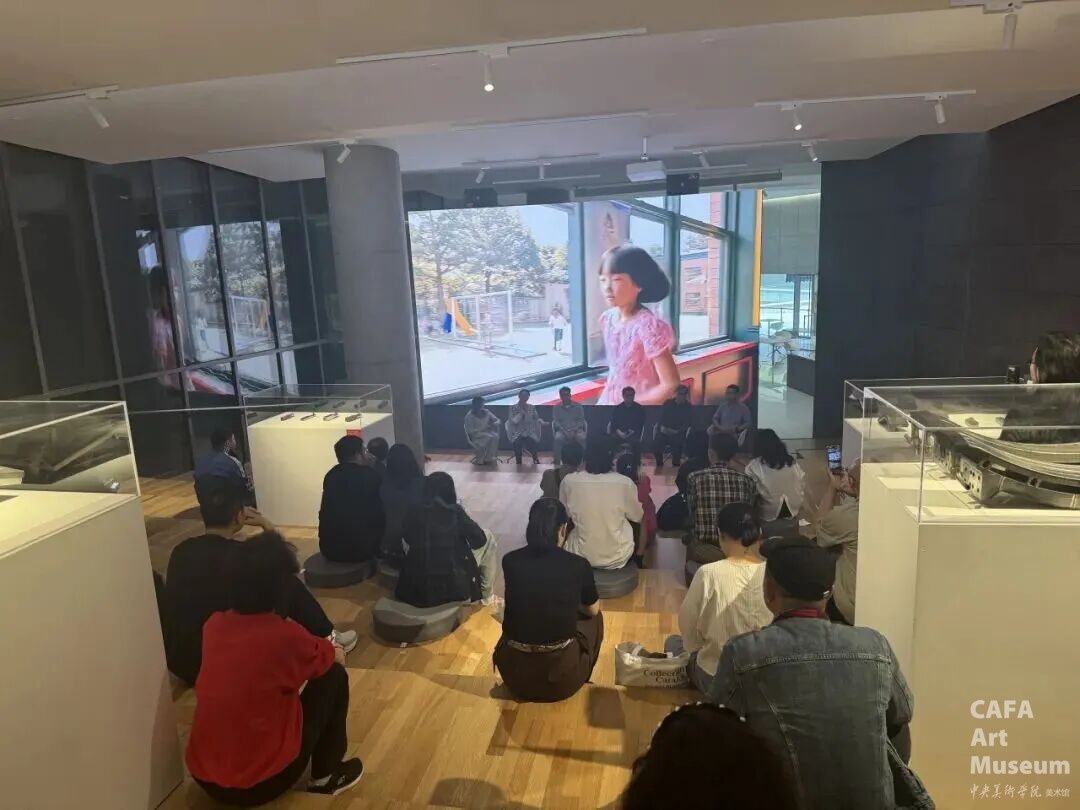
Site of the Salon Forum Event "A Brainstorm Between Scientists and Artists"
On the afternoon of October 7th, Mr. Jin Shangyi, former president of the Central Academy of Fine Arts, visited the exhibition site. The in-depth integration of science and art received Mr. Jin’s full recognition and high praise. After the visit, Mr. Jin Shangyi, still eager to share more insights, conducted a brainstorming session and discussion with the curatorial team, encouraging everyone to continue exploring and practicing the integration of science and art.

10月8日下午,系列沙龙活动《后碳未来:冰与火的文明记忆》在美术馆报告厅成功举办。活动聚焦能源转型中文明层次与节奏的变化,呼应展览中可控核聚变所呈现的未来文明想象。本活动也是《后碳:光与热的政治经济学》系列放映及论坛的收官之作。“后碳”系列曾在北京、上海、广州等多地呈现,回应太阳能与南方热浪对地景、技术及视觉文化的影响。
本次由策展人陈娱、蔡艺璇主持与策划,论坛邀请了瑞士艺术家Christoph Oeschger,并放映他的影片《在冰中,一切都会留下痕迹》,同时邀请科学文化作家郑军,以及人民大学哲学教授刘永谋,从艺术、科幻与哲学三个维度,共同探讨能源转型后的未来社会与文明形态。
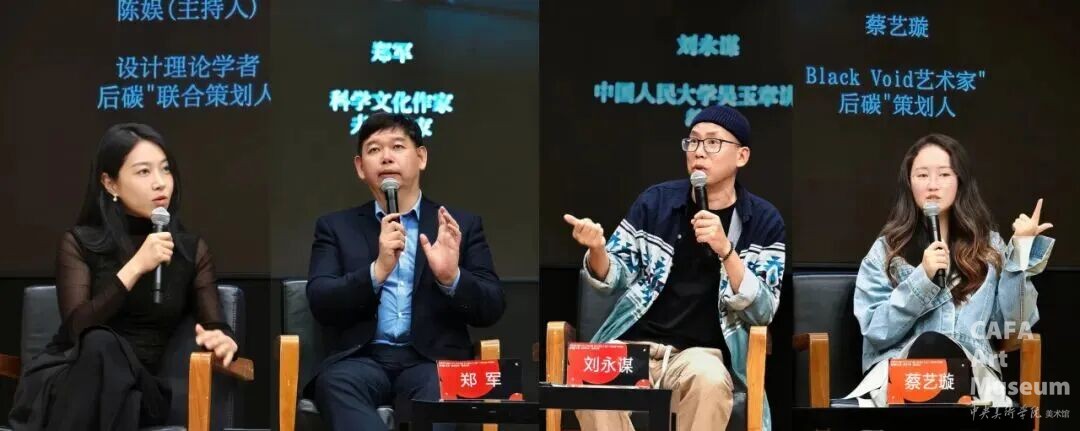
系列沙龙“后碳未来:冰与火的文明记忆”论坛活动现场

展览系列沙龙活动的“能源与文明——科学、艺术与人工智能的未来探索”学术论坛于10月10日在北京理工大学良乡校区举行。论坛由设计与艺术学院副院长张帆主持,论坛汇聚能源科学、人工智能、量子科技、数字艺术等多领域专家,包括合肥能源研究院渠承明副研究员、山东大学刘健教授、北理工物理学院张博副教授、北理工光电学院翁冬冬教授、北理工姜可教授等学者,以及展览总策划吴征、策展人沈星逸等策展团队代表。
与会嘉宾从核聚变研究进展、AI赋能科学探索,到超写实数字人技术、虚拟仿真在文化遗产中的创新应用,共同探讨了能源变革与文明演进的多重可能性。此次论坛作为“能源与文明”科学艺术展览的延伸活动,旨在推动学科融合,激发公众对未来能源形态的想象与思考。
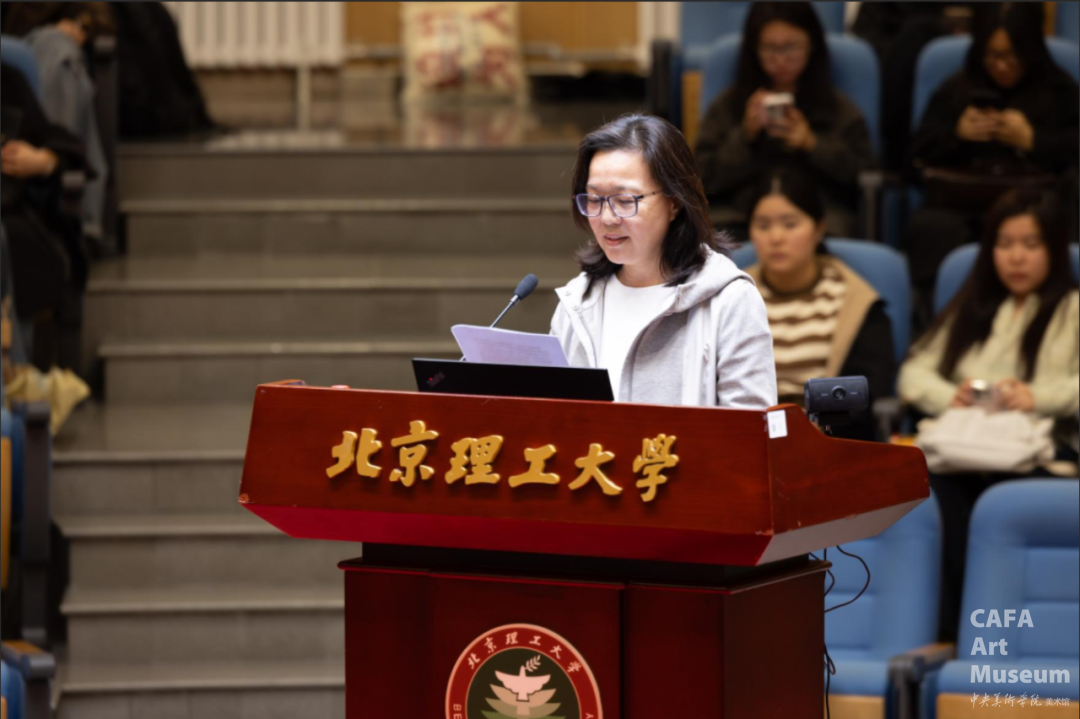
系列沙龙“能源与文明——科学、艺术与人工智能的未来探索”
论坛活动现场
10月13日下午,中国著名雕塑家、中央美术学院雕塑系前系主任隋建国先生莅临观展。在科学与艺术的大装置展项前,隋建国先生仔细聆听策展团队成员的详细介绍,并提出能源与文明的相关拓展性话题进行深度交流。

著名雕塑艺术家隋建国先生莅临观展

10月13日晚,由中央美术学院校团委、中央美术学院美术馆与合肥综合性国家科学中心能源研究院联合主办,大太阳(合肥)文化科技有限公司及合肥综合性国家科学中心能源研究院科学艺术联合实验室联合承办的“聚变电音——能源艺术电子音乐会”在中央美术学院美术馆正门震撼演出。本次活动不仅是电子音乐与能源科技的一次跨界实验,更是科学艺术联合领域的创新实践。据悉,此次电子音乐会吸引了近千名观众现场参与,线上直播覆盖数万人,获得业内与公众的广泛好评。它成功打破了艺术展示与科技体验的界限,让观众在电光火石中感受到能量转换的美学价值,也为未来艺术与科技的深度融合提供了全新尝试。
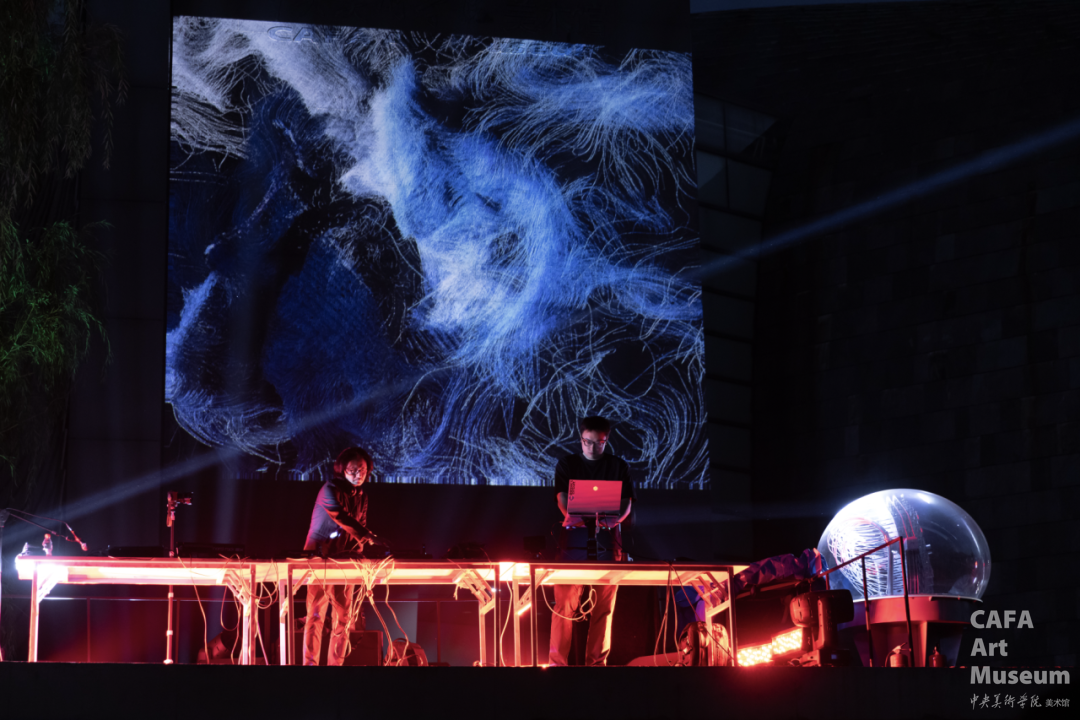
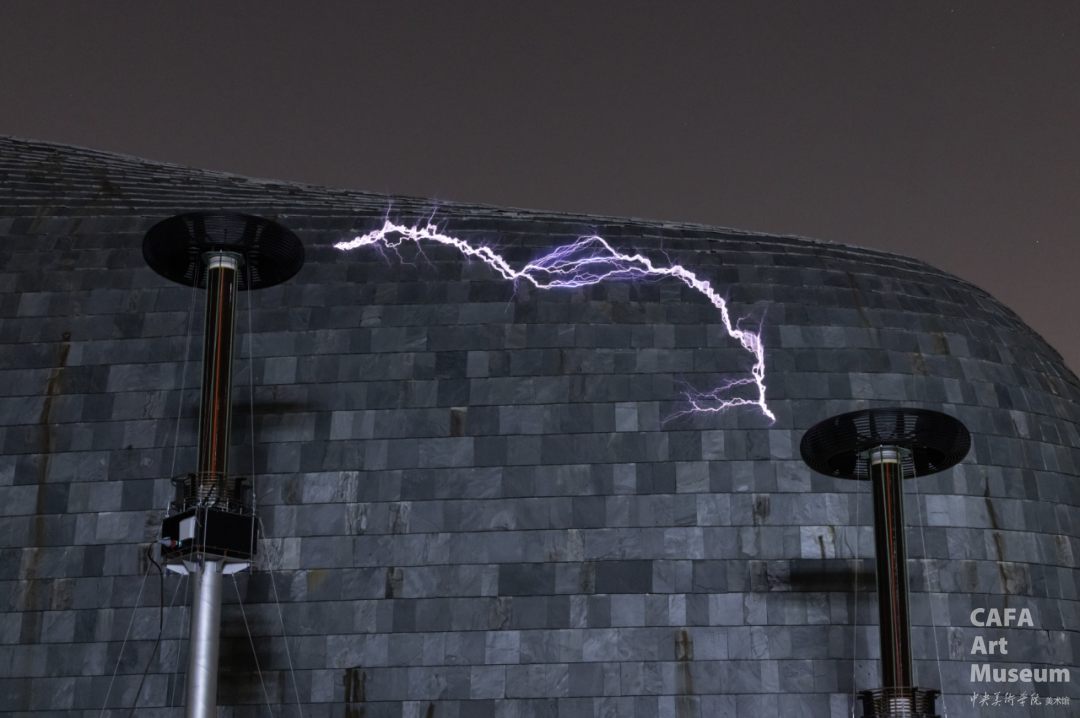
“聚变电音——能源艺术电子音乐会”活动现场
![]()
展期内,展览的公教团队聚焦“可控核聚变”核心主题,以“100个科学幻想”为创意载体,推出系列趣味工作坊,吸引北京数千名中小学生踊跃参与,打造了沉浸式科普新场景。
工作坊摒弃传统理论灌输模式,围绕100个脑洞大开的科学幻想展开——从“核动力直升机”到“行星发动机”,通过故事引导、创意绘画、简易模型搭建等多元形式,将抽象的可控核聚变原理转化为小朋友易懂的趣味知识。孩子们在幻想与实践中,初步理解可控核聚变的核心逻辑与能源价值,既感受科学的神奇,又释放创新想象力。
此次活动意义深远。它打破了学科壁垒,将严谨的科学知识置于充满美感的美术馆空间中,以一种跨学科、沉浸式的方式,为青少年们呈现了一部生动立体的“能源文明发展史”。同学们不仅通过展览了解了能源如何驱动人类文明进程,更通过亲手实践和与专家对话,深刻认识到能源问题的紧迫性与可持续未来的重要性。
